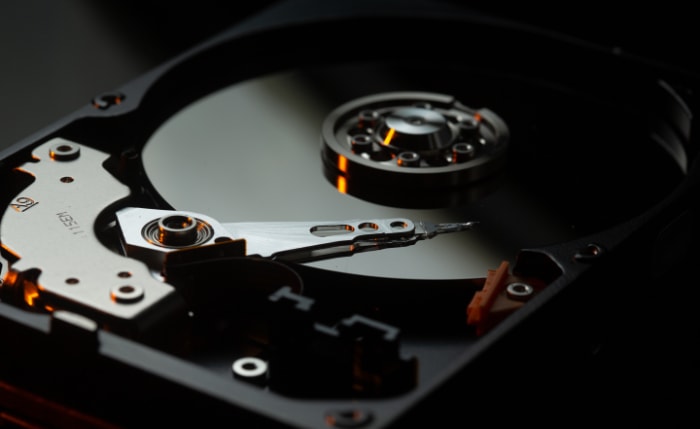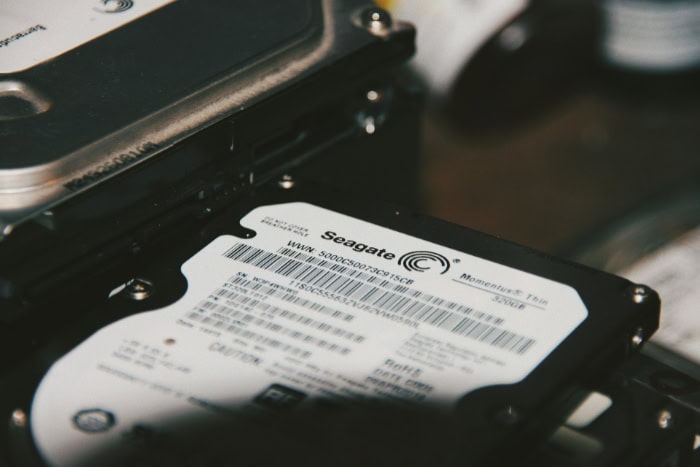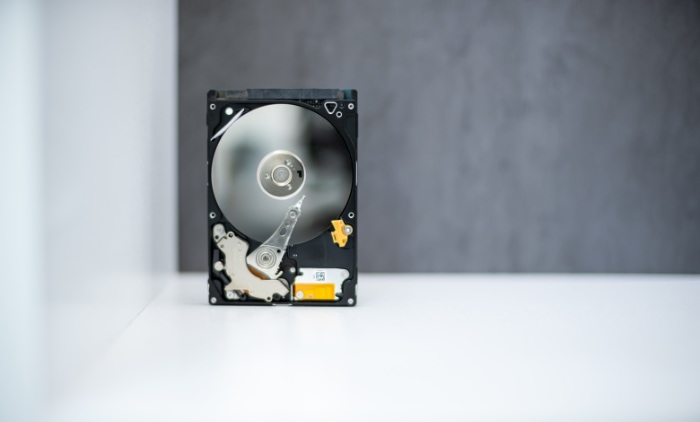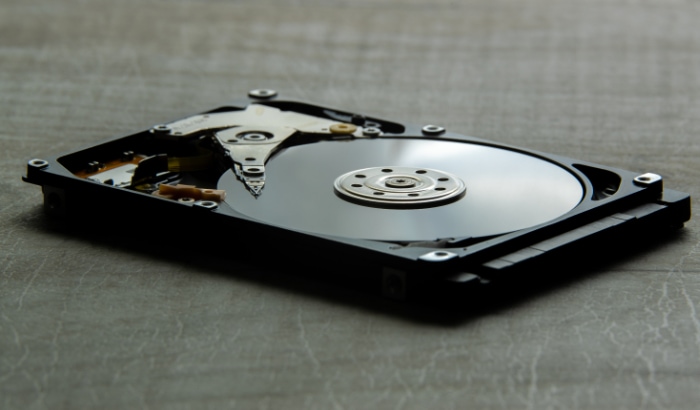Seagate vs. WD: Picking the Ideal Hard Drive

Every file you save, game you play, or project you launch relies on a trustworthy storage drive working behind the scenes. For years, Seagate and Western Digital have dominated this space, each offering tempting choices for both casual consumers and demanding professionals.
With Seagate claiming almost half the external HDD market and WD powering the majority of enterprise systems, the stakes are high for those seeking the right fit. Shoppers and IT pros alike weigh crucial questions: Which brand delivers the speed you need? Who holds up better long-term? How do features and price stack up for different uses?
If you’re caught between these two storage giants, a closer look can help you invest wisely and keep your data safe.
Performance & Speed
Performance often acts as the first deciding factor when choosing a storage drive. Users look for fast transfer rates, quick boot times, and enough capacity to handle their daily tasks or demanding workloads.
Seagate and Western Digital both offer a spectrum of solutions, ranging from portable drives for students and travelers to internal drives fit for gamers and professionals.
Drive Types
Portable drives have become essential companions for many, allowing quick backups and data transfers on the go. WD’s Black P10 stands out in this area, boasting speeds of up to 625 MB/s.
This performance level suits gamers wanting to reduce load times and creative users who often move large files. Seagate takes a more moderate approach with its Ultra Touch, which delivers maximum speeds around 137 MB/s.
Although the Ultra Touch is designed for convenience and everyday use, the performance gap becomes noticeable during large data transfers.
Internal storage options reflect a different competition. Both brands offer NVMe SSDs aimed at gamers and professionals who expect lightning-fast performance.
The WD Black SN750 is frequently chosen for high-speed gaming setups, delivering impressive read and write speeds that cater to those wanting snappy system responsiveness. On the other hand, Seagate’s FireCuda line pushes for versatility, combining SSD-like speeds with some of the larger capacities found in traditional drives.
The result is smooth multitasking, fast game loading, and efficient workflow management for power users.
Capacity Trends
Storage capacity requirements continue to rise, both for personal and enterprise users. Seagate has placed a strong focus on high-capacity drives, offering options like the Exos M series that reach up to 36TB.
These drives are tailored to businesses managing enormous volumes of data or individuals running home servers who never want to worry about storage limits. Western Digital counters with its Ultrastar DC HC690 range, which offers high capacities as well, peaking between 30 and 32TB.
This option is frequently seen in enterprise environments where reliability meets the need for vast storage amounts.
For everyday consumers, both brands provide a variety of accessible storage options. Entry-level drives from Seagate and WD can be found in capacities as low as 500GB, ideal for backing up a laptop or expanding console storage.
Mid-tier offerings, usually ranging between 2TB and 8TB, serve those with growing digital collections or frequent backup needs. Seagate often prioritizes maximizing available space at competitive prices, while WD puts an additional focus on specialized drive families for certain uses, such as high-performance gaming or multi-drive NAS setups.
Reliability & Failure Rates

Trust in a storage drive is built on more than just fast speeds and large capacities. For many buyers, reliability defines the true value of a hard drive or SSD, especially when critical data is at stake.
Seagate and Western Digital have long competed on this front, each offering specialized features and robust construction to minimize failure rates and protect data.
Failure Rate Analysis
Choosing a reliable drive often starts with evaluating how likely it is to fail over time. Annualized Failure Rates (AFRs) help illustrate how drives perform in typical use.
Western Digital’s Red Pro drives have built a strong reputation among NAS and power users for their notably low AFRs, often sitting below those of their direct competitors. These numbers suggest a lower risk of unexpected downtime or data loss for home and small business users who depend on long-term consistency from their hardware.
Seagate’s IronWolf series, widely used in similar environments, offers solid reliability but tends to report slightly higher AFRs in consumer circles. That said, IronWolf models focus on balancing reliability with performance and cost, which appeals to those seeking both value and robust operation.
Looking at enterprise systems, reliability becomes even more critical. Western Digital drives often appear in large-scale storage installations thanks to their durability and consistent operation over thousands of hours.
Enterprises aiming for maximum uptime and data integrity lean toward WD, which has built a history of steady performance and trust in professional settings.
Durability Features
Rugged construction and advanced technology further separate Seagate and Western Digital’s offerings when it comes to protecting data. Western Digital’s G-Drive ArmorATD, for example, is built for life on the go, featuring an IP54 rating against dust and water along with crush resistance up to 1,000 pounds (about 453 kilograms).
This makes it a strong choice for photographers, videographers, and outdoor professionals who need to keep their data protected in harsh conditions.
On the other hand, Seagate’s IronWolf Pro drives focus on durability within multi-drive environments. Vibration mitigation technology is integrated to counteract the constant jostling that occurs in NAS systems or large RAID arrays, extending drive life and improving performance over time.
This is especially important for setups where several drives operate side by side, as vibration can accelerate wear and lead to higher failure rates if not properly managed.
Cost & Value Proposition

Pricing and long-term value often influence storage drive choices as much as performance or reliability. Buyers range from students on a budget to professionals and businesses looking for efficient investments that won’t surprise them with hidden costs.
Seagate and Western Digital cover a broad spectrum of needs, offering affordable solutions for everyday users as well as high-performance drives for those with specialized requirements.
Pricing Tiers
Affordable storage solutions are available from both brands, but each brings distinct strengths. Seagate’s 2TB external drives are a popular choice for those seeking reliable backup at a wallet-friendly price.
These drives often land at or below the cost of comparable models from Western Digital, making them appealing to students or home users who want more capacity without breaking the bank. WD responds with its Elements series, which is widely recognized for consistent performance and robust build quality at a similar entry-level price point.
Shoppers willing to compare deals might find slight differences depending on availability and promotions, but both brands deliver dependable storage in this range.
A move into premium territory brings specialized features and advanced performance. The WD Black P10 targets users who value both security and speed.
Enhanced encryption options and a focus on safeguarding important files appeal to gamers and professionals who want more than just storage space. In contrast, Seagate’s FireCuda series is all about speed.
Built using hybrid technology and high-speed SSD components, FireCuda drives promise blazing load times and quick file transfers, catering to power users and creative professionals who push their hardware to the limit. Although these premium drives cost more up front, they deliver an experience and peace of mind that justifies the investment for users who demand the best.
Warranty & TCO
Long-term value often hinges on warranty coverage and total cost of ownership, not just the purchase price. Seagate offers strong reassurance on its enterprise products with standard five-year warranties.
This extended protection gives buyers confidence in the hardware’s durability and helps safeguard larger investments over time. WD’s Red Pro series meets the competition by supplying warranties that range from three to five years, depending on the specific model.
For buyers who rank long-term protection highly, checking the details of each model’s warranty period can influence the decision.
Total cost of ownership goes beyond warranty and upfront expense. Power efficiency becomes critical for businesses running dozens or hundreds of drives, as energy consumption can translate to significant monthly savings.
Both Seagate and WD have worked to optimize their enterprise drives for minimal power draw, but minor differences may appear in side-by-side comparisons. Maintenance, especially in high-capacity or multi-drive settings, is another factor.
Drives with built-in health monitoring and reliability features may reduce the need for costly interventions, saving time and money throughout the drive’s lifespan.
Specialized Applications

Selecting storage often means considering more than just raw speed or capacity. Different users require drives tailored for specific tasks, such as high-speed gaming, content creation, dependable network storage, or rugged portability for unpredictable environments.
Both Seagate and Western Digital have developed product lines that address these specialized demands, ensuring that users can match their exact workflow or use case with technology that truly fits.
Gaming & Content Creation
Gamers and creators expect ultra-low latency and rapid transfer speeds to keep up with demanding workloads and fast-paced play. WD’s Black Series is designed with these expectations in mind, offering drives that excel in PCIe SSD performance.
Their SN850 and similar models maximize read and write speeds, shorten load times, and provide ample bandwidth for seamless 4K video edits or AAA gaming marathons. For users who want to turn their PC or console into a true powerhouse, these drives consistently deliver.
Seagate’s FireCuda line takes a slightly different approach by combining the benefits of solid-state storage with traditional hard drive capacity. FireCuda hybrid drives use flash memory to accelerate commonly accessed files, such as frequently played games or regularly used project files.
This approach provides balanced performance, delivering both speed and large storage potential for those juggling libraries of games, high-res photos, or extensive project files. For users who need both value and speed, FireCuda stands out as a smart middle ground.
NAS & Enterprise Storage
Network Attached Storage (NAS) and enterprise environments demand drives engineered for continuous use, multi-drive configurations, and easy scalability. WD Red Pro is a favorite among small business owners and enthusiasts who want worry-free operation in multi-bay NAS systems.
Purpose-built firmware, vibration protection, and compatibility with major NAS brands ensure reliable 24/7 operation and painless integration for expanding teams or growing home labs.
Seagate’s IronWolf series is tailored to similar environments, with drives featuring helium-filled technology to reduce internal friction, lower power use, and enable increased capacity. IronWolf drives are recognized for their scalability, making them a natural fit for larger storage arrays and enterprise deployments.
Advanced health monitoring and vibration resistance further boost their appeal for users managing data across multiple drives and seeking long-term stability.
External Use Cases
Not everyone keeps their storage in a safe, climate-controlled office. Many rely on portable drives that can handle travel, weather, and sometimes rough handling.
Western Digital’s ArmorATD sets the standard with its triple-layer construction, IP54 rating, and crush resistance up to 1,000 pounds. Outdoor photographers, field researchers, and traveling professionals frequently choose ArmorATD for mission-critical backups and peace of mind, even in unpredictable environments.
Seagate’s Backup Plus Portable offers a more streamlined solution for everyday protection and convenience. It combines fast transfer speeds with a slim, lightweight enclosure, making it easy to slip into a backpack or briefcase.
While not as rugged as ArmorATD, it still provides reliable performance for day-to-day backups, quick file transfers, and occasional travel.
Technology & Innovation

Innovative technology remains a driving force behind both Seagate and Western Digital’s appeal. As file sizes grow and security expectations tighten, advancements in how drives store, protect, and move data have become essential.
Both companies invest heavily in developing recording methods and value-added software, ensuring that users from home offices to massive data centers get the most efficient and secure storage possible.
Recording Technologies
Pushing storage capacity beyond familiar limits requires new engineering approaches. Seagate leads with its Heat-Assisted Magnetic Recording (HAMR) technology, which uses targeted heating to pack more data into each platter.
This method enables drives to reach capacities of 30TB and beyond, promising a clear path to larger drives for data-heavy environments such as backup servers or content production studios. HAMR technology stands out for those who anticipate future-proofing their storage infrastructure while minimizing the physical footprint.
Western Digital sets its own benchmark with helium-filled drive technology. Filling drives with helium, which is less dense than air, reduces internal friction and allows for more platters in the same enclosure.
The result is not only increased capacity but also notably better energy efficiency, which is a critical factor for enterprise users managing dozens or hundreds of drives around the clock. Lower power consumption translates to reduced operating costs, less heat generation, and improved drive reliability, which businesses find appealing.
Security Features
Protecting sensitive data has become an expectation for any modern storage device. WD builds AES-256 bit encryption directly into many of its drives, offering robust security that works seamlessly for users needing to safeguard personal, client, or company information.
Seagate offers encryption as an option on select models, providing flexibility for users who may not need built-in security or prefer to manage their encryption separately.
Beyond encryption, software and firmware play a significant role in daily usability and protection. Seagate delivers its Dashboard software to help back up files, schedule automated saves, and monitor drive health with a simple user interface.
Western Digital counters with its own suite, including WD Backup tools and WD Security, which streamline regular backups and add extra layers of access control and device management. Both companies make it easier for users to take command of their data’s safety, whether for personal peace of mind or enterprise compliance.
Conclusion
Selecting between Seagate and Western Digital ultimately comes down to matching your storage needs with each brand’s strengths. Seagate consistently shines in high-capacity solutions, making it a practical choice for users or businesses that prioritize sheer storage volume at competitive prices.
On the other hand, Western Digital stands out in specialized workflows, particularly for enterprise and creative professionals who demand top-tier reliability, advanced security, and finely tuned performance.
Reliability is another area where WD often claims the spotlight, thanks to its proven track record in demanding enterprise environments and robust NAS compatibility. Seagate, however, delivers strong value for those who seek affordable, high-capacity drives without sacrificing too much on durability or performance.
The best drive for you depends on how you plan to use it. For multi-bay NAS systems, WD Red Pro is a safe bet. High-speed gaming or content creation will benefit from the WD Black or Seagate FireCuda series.
If portable, rugged storage is required, consider WD ArmorATD or Seagate’s Backup Plus Portable. By focusing on your specific workflow and storage goals, you can confidently select the brand and model that offer the performance, reliability, and peace of mind you need.


